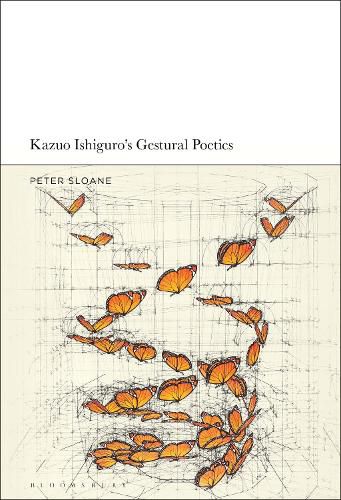Readings Newsletter
Become a Readings Member to make your shopping experience even easier.
Sign in or sign up for free!
You’re not far away from qualifying for FREE standard shipping within Australia
You’ve qualified for FREE standard shipping within Australia
The cart is loading…






Through readings of Ishiguro’s repurposing of key elements of realism and modernism; his interest in childhood imagination and sketching; interrogation of aesthetics and ethics; his fascination with architecture and the absent home; and his expressionist use of ‘imaginary’ space and place, Kazuo Ishiguro’s Gestural Poetics examines the manner in which Ishiguro’s fictions approach, but never quite reveal, the ineffable, inexpressible essence of his narrators’ emotionally fraught worlds.
Reformulating Martin Heidegger’s suggestion that the ‘essence of world can only be indicated’ as ‘the essence of world can only be gestured towards,’ Sloane argues that while Ishiguro’s novels and short stories are profoundly sensitive to the limitations of literary form, their narrators are, to varying degrees, equally keenly attuned to the failures of language itself. In order to communicate something of the emotional worlds of characters adrift in various uncertainties, while also commenting on the expressive possibilities of fiction and the mimetic arts more widely, Ishiguro appropriates a range of metaphors which enable both author and character to gesture towards the undisclosable essences of fiction and being.
$9.00 standard shipping within Australia
FREE standard shipping within Australia for orders over $100.00
Express & International shipping calculated at checkout
Through readings of Ishiguro’s repurposing of key elements of realism and modernism; his interest in childhood imagination and sketching; interrogation of aesthetics and ethics; his fascination with architecture and the absent home; and his expressionist use of ‘imaginary’ space and place, Kazuo Ishiguro’s Gestural Poetics examines the manner in which Ishiguro’s fictions approach, but never quite reveal, the ineffable, inexpressible essence of his narrators’ emotionally fraught worlds.
Reformulating Martin Heidegger’s suggestion that the ‘essence of world can only be indicated’ as ‘the essence of world can only be gestured towards,’ Sloane argues that while Ishiguro’s novels and short stories are profoundly sensitive to the limitations of literary form, their narrators are, to varying degrees, equally keenly attuned to the failures of language itself. In order to communicate something of the emotional worlds of characters adrift in various uncertainties, while also commenting on the expressive possibilities of fiction and the mimetic arts more widely, Ishiguro appropriates a range of metaphors which enable both author and character to gesture towards the undisclosable essences of fiction and being.